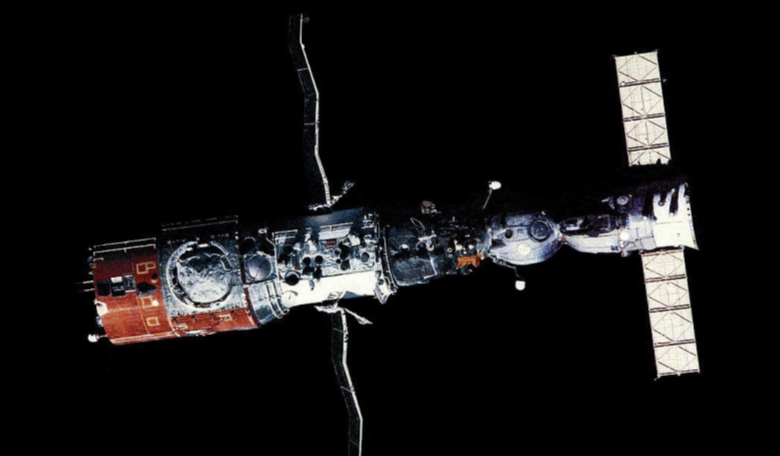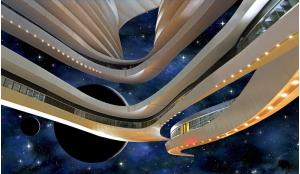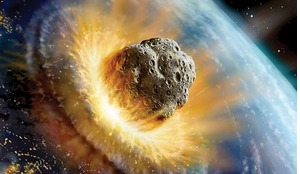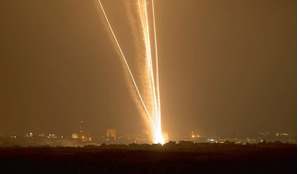During his first orbital flight on the Mercury-6 spacecraft, astronaut John Glenn noticed a strange phenomenon. The spacecraft was in orbit and, when the Sun came up, he reported with great excitement that he was surrounded by thousands of small glowing particles that were moving alongside the ship, spinning around and not lagging behind: “I’ve never seen anything like it,” he said.
During his post-flight medical exam, Glenn told the psychologist about these space ‘fireflies’. “What did they say, John?” asked the psychologist in all seriousness. Glenn burst out laughing. Later on, it turned out that the particles were actually small pieces of ice, the product of hydrogen peroxide decomposition in the attitude engines.
Russian veteran cosmonaut Georgy Grechko is an acknowledged ‘UFO expert’. The thing is - he actually created his own UFO!
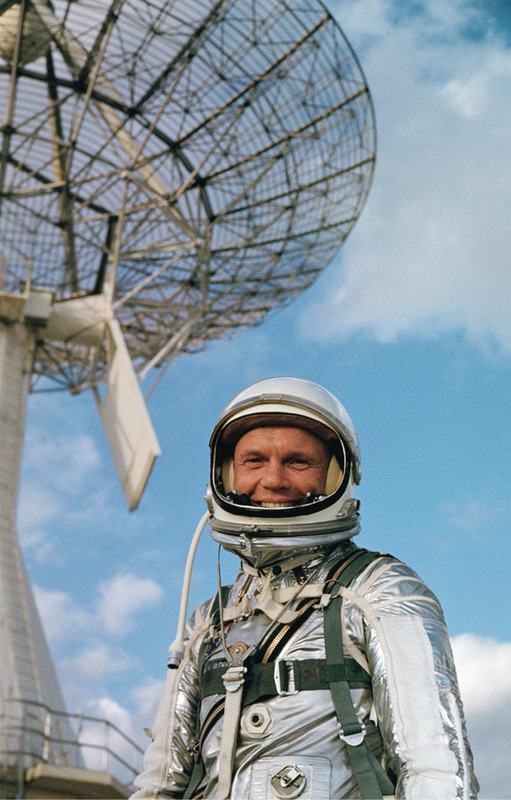 Astronaut John H. Glenn wearing a Mercury pressure suit at Cape Canaveral, Florida, during preflight training activities for his Mercury- Atlas 6 flight in 1962. He made America’s first manned Earth-orbital spaceflight completing three orbits of Earth.
Astronaut John H. Glenn wearing a Mercury pressure suit at Cape Canaveral, Florida, during preflight training activities for his Mercury- Atlas 6 flight in 1962. He made America’s first manned Earth-orbital spaceflight completing three orbits of Earth.
“It all started when I saw the ‘flying saucers’,” he recalled in a TV interview. “And I got scared! I looked out of the Salyut-6 orbital station viewport and saw that we were being followed by ‘saucers’. They were moving in a clearly defined formation, and occasionally flickered with red lights. So I said to my crtew commander, Yuri Romanenko: ‘Look, here they come!’. He smiled and said that it was just dust that had come off the station coating when we corrected our orbit.”
Since it is impossible to determine distances in space due to lack of any reference points or landmarks, an observer on a spaceship may think that an object is far away when in reality they are just dust particles that are flying right by the viewport.
They don’t buy into his story that it was all just a big joke - such illusions are hard to dismiss and can stick around for a long time
When a visiting crew arrived on board the Salyut-6 station, Grechko decided to play a joke on the new arrivals. He knocked on the viewport with his knuckles, and eight dust particles came off from the outside coating. It was right before sunrise and the reason for the red sparkles on the ‘saucers’ was that the sky turned reddish during sunrise. Grechko called the other cosmonauts over and showed them the UFOs, noting that “they’re not dangerous right now, they’re following us, but not attacking.” The guests were quite impressed.
But then Grechko made a mistake. While he usually told his colleagues that he was pulling a prank, that time he did not. And instead of explaining the appearance of UFOs by natural phenomena, he told them that when they got back to Earth, they should ask cosmonaut Sevastianov for more details, as he “knew all about them”.
But Vitaly Sevastianov happened to be on vacation and he didn’t greet the cosmonauts as normal on their return to Earth. So, they kept the ‘flying saucers’ story to themselves for a few days before telling some people. Of course, only their friends - and only in secret!
Almost immediately, they were called in to upper management: “Did you see UFOs?” They confirmed they had. Thus, the cosmonauts relayed all of Grechko’s made-up stories to their bosses. And the UFO legend reached the Kremlin.
Georgy Grechko still apologises to ufologists, who constantly remind him that he had seen a UFO. They don’t buy into his story that it was all just a big joke - such illusions are hard to dismiss and can stick around for a long time.
The American Skylab space station of the mid-1970s is also no stranger to UFOs. During the third expedition to the orbiting station, astronaut Bill Pogue went on two space walks. During one of them, on 22 November 1973, he noticed something unusual: although the Earth was completely dark down below him, here, at 270 miles away from the planet, there was an apparent dim light.
Suddenly, his EVA partner Ed Gibson blurted out: “Look at those things! Are those UFOs? There are hundreds of them!” Pogue looked in the direction Gibson was pointing. Ed was right. Hundreds of flying objects looked like a cloud of fireflies, pink and purple, with a metallic tint.
A third member of the crew - Gerry Carr - was observing his colleagues’ movements from the inside and listening to them on the radio. He turned off the lights inside Skylab in an attempt to see the ‘space aliens attack’ through the viewport.
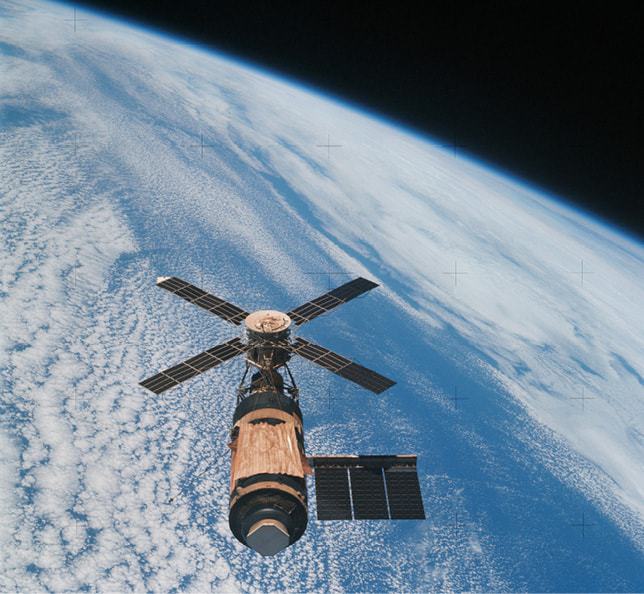 Skylab space station
Skylab space station
After staring at the dark sky for a few seconds, Bill Pogue burst out laughing. He said: “These UFOs are pieces of plastic insulation that I had cut off when I removed the junction box!” The aluminum coating of each piece of plastic insulation reflected some light, and this was enough to make the pieces sparkle. The UFOs disappeared when Skylab went dark. Forty minutes later, the astronauts turned the lights back on and finished their work.
Another ‘incident’ occurred on 21 October 1995 on board US Space Shuttle Columbia during its STS-73 mission. “We have an unidentified flying object”, joked mission specialist Catherine ‘Cady’ Coleman, when her colleague Michael Lopez-Alegria floated into the Spacelab laboratory module. If she only knew what consequences her innocent joke would have, she would likely not have said anything.
A request from a member of Congress is a serious matter and NASA was forced to start an official investigation
The astronaut’s joking remark got out on the internet and the obviously unbalanced UFO fans raised up a storm. Someone named Donald Ratch sent an official letter to his congressman, Robert Ehrlich, Jr., demanding answers to questions such as: “Which one of the two female astronauts on board uttered the remark?” “Who else had seen the object?” “Was the UFO shaped like a saucer?” “Had it been detected by the onboard radar?” and so forth. Ehrlich had forwarded the questions to NASA Administrator Dan Goldin.
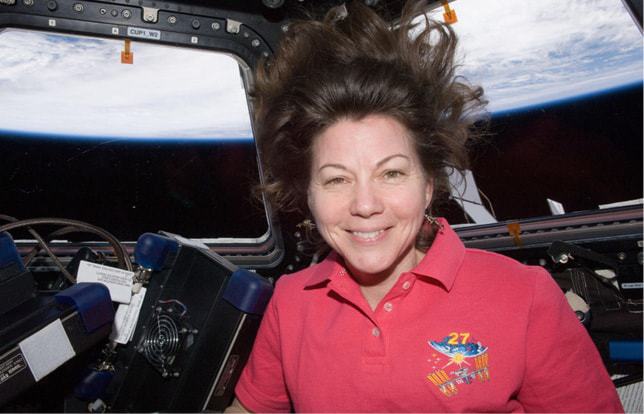 An innocent joke by NASA astronaut Cady Coleman during her first spaceflight (STS-73) didn’t preclude her from a further Space Shuttle mission (STS-93) and a stint on the International Space Station during Expeditions 26 and 27. She is pictured in the Cupola of the ISS in April 2011.
An innocent joke by NASA astronaut Cady Coleman during her first spaceflight (STS-73) didn’t preclude her from a further Space Shuttle mission (STS-93) and a stint on the International Space Station during Expeditions 26 and 27. She is pictured in the Cupola of the ISS in April 2011.
A request from a member of Congress is a serious matter and NASA was forced to start an official investigation. Poor Cady had to write an explanatory statement, in which she said that there had been no ‘flying saucer’, and the ‘object’ was located in a hermetically sealed portion of the ship. Coincidentally, the Spacelab module does not have viewports, making it impossible to see anything outside of the spaceship.
But ufologists still did not believe NASA - and probably never will. The discussion of the ‘Catherine Coleman UFO’ continued online for many months and is still there today. One only sees what one wishes to see, as the saying goes.





